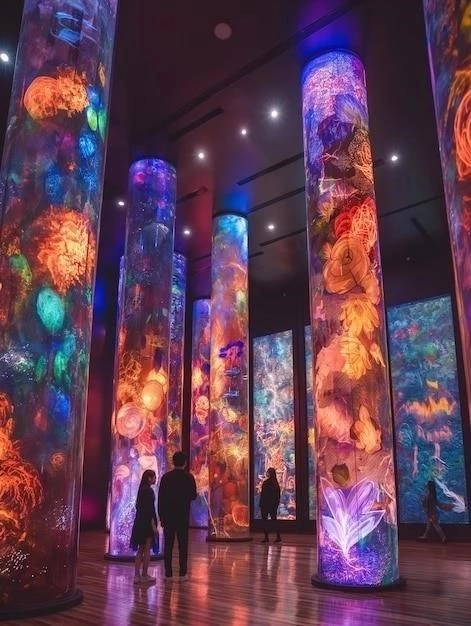The Birth of a Metropolis: Early Architectural Influences
New York City’s architectural journey began in the 17th century as a Dutch colony, New Amsterdam. Dutch influences are still evident, though often overshadowed by subsequent waves of architectural trends. The Dutch introduced stepped-gable facades and a penchant for brick construction, elements that can still be found in some of the city’s oldest neighborhoods. As New York grew, its architecture evolved, embracing a melting pot of styles reflecting its diverse immigrant populations and evolving ambitions.
The Rise of the Skyscraper: Defining the New York Skyline
The late 19th century ushered in a period of unprecedented urban growth and technological advancement in New York City. The convergence of these forces led to the emergence of a new architectural typology that would forever alter the city’s image: the skyscraper. Factors such as limited land availability on Manhattan Island, coupled with the invention of the elevator and the development of steel-frame construction, made building upwards not just desirable but essential.
Early skyscrapers, such as the iconic Flatiron Building (1902) by Daniel Burnham, showcased the structural possibilities of steel while embracing the prevailing Beaux-Arts aesthetic. The Woolworth Building (1913) by Cass Gilbert, with its neo-Gothic flourishes, further demonstrated the aesthetic heights attainable in these new towering structures. These early skyscrapers, while impressive for their time, were merely a prelude to the soaring heights and innovative designs that would come to define the New York City skyline in the following decades. The race to the sky had begun, fueled by economic ambition, technological innovation, and a desire to leave an indelible mark on the urban fabric.
Art Deco Elegance: A Golden Age of Design
The Roaring Twenties witnessed the rise of Art Deco, a style that found its ultimate expression in the soaring skyscrapers of New York City. Art Deco, with its emphasis on geometric forms, rich materials, and stylized ornamentation, perfectly captured the city’s newfound optimism, exuberance, and embrace of modernity. The Chrysler Building (1930), a masterpiece by William Van Alen, epitomizes Art Deco’s sleek verticality and celebratory spirit, its crown a symphony of stainless steel arches and radiating sunbursts.
Across the city, Art Deco’s influence extended beyond skyscrapers, gracing everything from theaters and hotels to subway stations and apartment buildings. The grandeur of Radio City Music Hall (1932), with its sweeping curves and opulent interiors, exemplified Art Deco’s ability to transport audiences to a realm of glamour and escape. The Empire State Building (1931), though often categorized as Art Deco, exhibits a more restrained aesthetic, its limestone facade and setbacks reflecting a transition towards a more streamlined, modern style. Nevertheless, its towering presence and iconic silhouette cemented its status as a symbol of New York City’s ambition and architectural prowess. The Art Deco era left an indelible mark on the city’s skyline, a testament to a time when architecture aspired to not only touch the sky but to embody the spirit of an age.
Post-War Modernism: Innovation and Experimentation
The post-World War II era ushered in a new architectural vernacular in New York City, one that embraced the principles of Modernism. This international movement, with its emphasis on function, simplicity, and new materials, found fertile ground in a city eager to shed the vestiges of the past and embrace a bold new future. The Lever House (1952) by Skidmore, Owings & Merrill, with its curtain wall of glass and steel and its minimalist aesthetic, became a prototype for countless office buildings that would follow, not only in New York but across the globe.
However, the unadorned functionality of early Modernism soon gave way to a more expressive and diverse range of interpretations. The Guggenheim Museum (1959) by Frank Lloyd Wright, a spiraling concrete form that defied conventional notions of museum design, became an instant icon, demonstrating the sculptural potential of modern architecture. Meanwhile, architects like Eero Saarinen and Marcel Breuer experimented with bold forms and innovative uses of concrete, leaving their mark on the city with structures such as the TWA Flight Center (1962) at JFK Airport and the Whitney Museum of American Art (1966). This period of experimentation and innovation transformed the cityscape, showcasing the versatility and evolving nature of Modernist principles.
The Enduring Charm of Brownstones: A Residential Legacy
While skyscrapers dominate the skyline, the brownstone remains an enduring symbol of New York City’s residential character. These row houses, named for their distinctive reddish-brown sandstone facades, emerged in the mid-19th century, a response to the burgeoning middle class and the city’s relentless northward expansion. Their construction, often featuring intricate ironwork and decorative details, showcased the craftsmanship of a bygone era.
Brooklyn Heights, Park Slope, and the Upper West Side became synonymous with these elegant homes, their bay windows, high stoops, and decorative cornices adding a touch of Victorian elegance to the streetscape. Originally single-family dwellings, many brownstones were later divided into apartments, accommodating waves of immigrants and evolving family structures. Though they experienced a period of decline in the mid-20th century, brownstones have since experienced a resurgence in popularity, their historic charm and enduring architectural integrity attracting those seeking a connection to the city’s past. Today, painstakingly restored brownstones stand as a testament to the city’s ability to reinvent itself while preserving its architectural heritage. They represent a timeless elegance and a sense of neighborhood that continues to define New York City living.
Cast-Iron Facades: A Uniquely New York Aesthetic
In the mid-19th century, New York City embraced a building technology that would leave an indelible mark on its architectural character: cast-iron facades. This innovative technique, which involved casting molten iron into intricate molds, allowed for the mass production of ornate architectural elements previously achievable only through painstaking hand-carving. The result was a surge in buildings adorned with elaborate facades that mimicked the grandeur of European palaces, but at a fraction of the cost.
SoHo, once a bustling manufacturing district, boasts one of the world’s greatest concentrations of cast-iron architecture. Its streets are lined with former factories and warehouses adorned with classical columns, intricate cornices, and decorative motifs, all rendered in iron. This distinctive style, with its blend of aesthetic opulence and industrial practicality, perfectly captured the spirit of New York City during a period of rapid economic expansion and urban development. Though the heyday of cast-iron construction was relatively brief, lasting from the 1840s to the 1880s, its legacy endures in the many buildings that continue to define the city’s architectural fabric. These structures, often meticulously restored, serve as a testament to the ingenuity and entrepreneurial spirit of a bygone era, their iron facades a tangible link to New York’s industrial past.

Grand Central Terminal: A Beaux-Arts Masterpiece
More than just a transportation hub, Grand Central Terminal stands as a monument to the grandeur of the Beaux-Arts architectural style and a testament to the civic ambition of early 20th-century New York City. Completed in 1913, the terminal was designed by the firm of Reed and Stem, with significant contributions from Warren and Wetmore. Their design masterfully combined classical elements, such as soaring columns, arched windows, and sculptural details, with modern engineering innovations to create a space that is both awe-inspiring and highly functional.
The terminal’s most iconic feature, the Main Concourse, is a vast, vaulted space that evokes a sense of grandeur and possibility. Natural light streams through its massive arched windows, illuminating the celestial ceiling adorned with a twinkling depiction of the constellations. Throughout the terminal, intricate mosaics, ornate chandeliers, and sculptures add layers of richness and detail, transforming a utilitarian space into a work of art. Grand Central Terminal stands as a powerful reminder that even in a city that never sleeps, there is room for moments of awe and contemplation. It is a place where the hurried pace of modern life gives way to the timeless elegance of a bygone era, a testament to the enduring power of architecture to elevate the human spirit.

The Empire State Building: An Icon of Ambition
Completed in 1931 at the height of the Great Depression, the Empire State Building transcended its status as a skyscraper to become an enduring symbol of American ingenuity, resilience, and aspiration. Designed by the architectural firm Shreve, Lamb & Harmon, the building’s design reflects a transition from the ornate embellishments of Art Deco to a more streamlined, modern aesthetic. Its facade, clad in Indiana limestone and granite, features setbacks that emphasize its verticality while adhering to the city’s newly enacted zoning laws.
Rising 102 stories above the bustling streets of Midtown Manhattan, the Empire State Building held the title of the world’s tallest building for nearly four decades, a testament to the ambition and technological prowess of its era. Its spire, originally intended as a mooring mast for dirigibles, became a broadcasting antenna, extending its reach beyond the physical realm into the nascent world of radio and television. More than just a skyscraper, the Empire State Building embodies the spirit of New York City itself: a beacon of progress, a testament to human achievement, and an enduring symbol of the power of dreams to touch the sky.

The Chrysler Building: Art Deco at its Finest
A symphony in steel and glass, the Chrysler Building stands as a testament to the exuberant spirit and artistic innovation of the Art Deco era. Completed in 1930, this architectural masterpiece, designed by William Van Alen, captivated the world with its soaring height, distinctive silhouette, and lavish ornamentation inspired by the burgeoning machine age.
The building’s most iconic feature, its crown, is a triumph of both engineering and artistry. Composed of seven radiating arches clad in gleaming stainless steel, it evokes a sense of dynamism and aspiration, culminating in a spire that pierces the sky. The building’s facade is equally captivating, with intricate details such as stylized eagle hood ornaments, hubcaps, and radiator grill designs, paying homage to the automobile industry that fueled the Chrysler Corporation’s success. Inside, the lobby continues the theme of luxurious modernity, with rich marbles, intricate murals, and gleaming metalwork. The Chrysler Building, with its unique blend of architectural audacity and artistic finesse, remains an enduring symbol of New York City’s skyline and a timeless reminder of the power of human creativity to shape the urban landscape.
Contemporary Architecture: Shaping the Future Cityscape
New York City, a perpetual canvas for architectural innovation, continues to evolve with a wave of contemporary buildings that challenge conventions and redefine the urban experience. From soaring skyscrapers that push the boundaries of engineering to daring cultural institutions that reimagine public space, the city embraces a forward-looking approach to design, reflecting its global stature as a center for creativity and experimentation.
One World Trade Center (2014) by Skidmore, Owings & Merrill, rising from the ashes of the September 11th attacks, stands as a symbol of resilience and a testament to the city’s enduring spirit. Its minimalist, geometric form, clad in shimmering glass, speaks to a contemporary aesthetic while its symbolic height (1,776 feet) reinforces its significance in the city’s skyline. Meanwhile, projects like the High Line, a revitalized elevated railway transformed into a linear park, demonstrate the transformative power of adaptive reuse and the growing emphasis on integrating nature into the urban fabric. As New York City continues to evolve, its contemporary architecture reflects a commitment to sustainability, technological advancement, and a bold vision for the future of the built environment.

Sustainability and Innovation: The Future of New York’s Built Environment
As a global metropolis grappling with the challenges of climate change and a growing population, New York City recognizes the imperative for sustainability and innovation in its built environment. Architects, urban planners, and policymakers are increasingly embracing strategies that prioritize energy efficiency, reduce carbon emissions, and enhance the quality of life for residents.
The city’s ambitious OneNYC plan sets forth a comprehensive roadmap for a more sustainable and resilient future, with a focus on reducing greenhouse gas emissions by 80% by 2050. This vision is already shaping the design of new buildings, with a growing emphasis on green building practices, renewable energy sources, and innovative materials. From high-performance facades that maximize natural light and minimize energy consumption to green roofs that mitigate the urban heat island effect, sustainable design is no longer a novelty but an integral part of New York’s architectural vernacular. The city’s future skyline will undoubtedly be shaped by these innovations, reflecting a commitment to creating a built environment that is both environmentally responsible and aesthetically inspiring.










